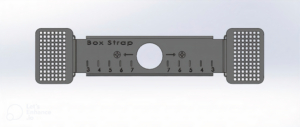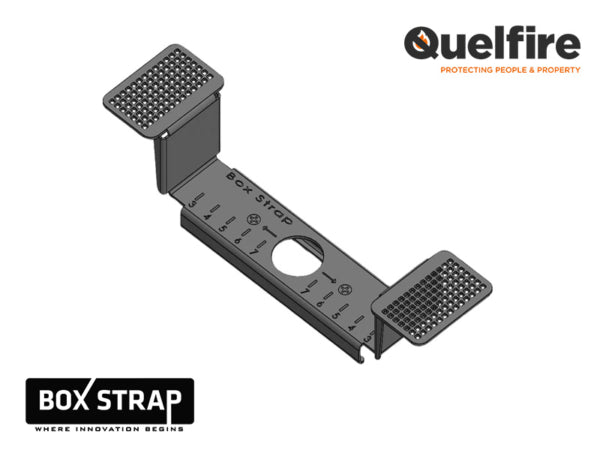The Box Strap, an innovative metal bracket, is a game-changer in the industry. It’s designed to support double or single metal back boxes within stud walls, offering a better alternative to telescopic brackets and drylining back boxes. The Box Strap ensures the electrical boxes stay in place, even during the most challenging construction stages.
What are the main benefits of the Box Strap?
The Box Strap offers a wide range of benefits, such as providing a seamless finish when installing metal back boxes, reinforced corners, and precise dimensions for fixing points. Plus, pull tests from both the front and back of the bracket have confirmed its suitability for all types of installations on single- and double-layer plasterboard.
When examining different parties, this product is particularly beneficial for electrical contractors, drylining contractors, and property developers.
Electrical contractors
The Box Strap removes unwanted earth parallel paths during initial verification testing and ensures a flush finish with metal back boxes. The product also allows for installing metal boxes even after both sides of the wall are boarded, making the installation process smoother, faster, and more cost-effective than traditional approaches.
The bracket is designed for a 35mm metal back box with a 26mm depth, which allows for plasterboard thicknesses of 12.5mm or 15mm. This gives a total depth of 38.5mm or 41mm—sufficient for kitchen grids, media plates, and dimmer switches.
Drylining contractors
For drylining contractors, the Box Strap helps build baffle boxes without clashes, ensures walls can be closed without needing to cut around back boxes, and reduces any required rework.
Property developers
A significant benefit for property developers is the contribution to sustainability. It is estimated to help save up to 2,843kg of CO₂ across 200 apartments, helping reduce their carbon footprint.
Comparing the Box Strap to traditional methods
The many benefits of the Box Strap make it a respectable alternative to traditional telescopic bracket installation methods. This approach to installation often causes small bows on finished walls, clashes with baffle box details, and gaps between the back box and the finished wall.
This is due to the problems dryliners face when cutting around multiple boxes, particularly on party walls with two layers of staggered plasterboard.
Also, drylining back boxes can prevent the electrical switch gear from achieving a flush finish, and their lugs can bend backwards over time, causing the socket to become loose.
Quelfire, in conjunction with Box Strap
At Quelfire, we continuously update our library of tested solutions for service penetrations.
We have teamed up with Box Strap to test their product and provide primary test evidence for the construction industry.
If you’re using the Box Strap on your projects, we are happy to announce that we now have several tested details for this in conjunction with our Acoustic Intumescent Putty Pads for single and double sockets, metal media panels, and single- and double-layer plasterboard walls.
For further information:
• About the Box Strap, please email info@boxstrap.co.uk
• Regarding the test evidence, please email technical@quelfire.co.uk

Summary: Reviewing benefits of the Box Strap
Electrical contractors:
• Removes unwanted earth parallel paths during EIC testing
• Ensures a flush finish with metal back boxes
• Allows for the installation of metal back boxes even after both sides of the wall are boarded
• Faster and more cost-effective installation
Drylining contractors:
• Helps to build baffle boxes without clashes
• Ensures walls can be closed without needing to cut around back boxes
• Reduces rework of goods
Property developers:
• Reduction in carbon footprint
• Helps to save up to 2,843 of CO₂ across 200 apartments
Other:
• Seamless finish
• Reinforced corners
• Precise dimensions for fixings
• Additional support through finger holes
• Strength-tested
FAQs: The Box Strap in Conjunction with Quelfire Putty Pads
View the FAQ document.


